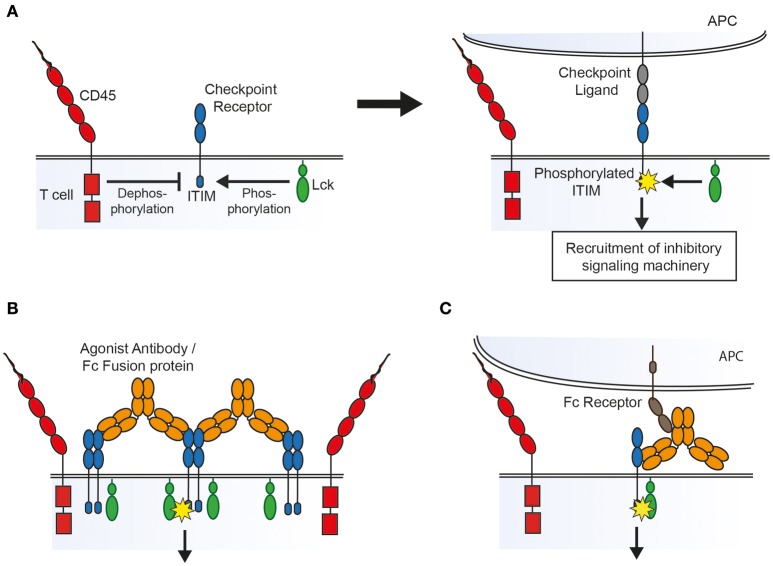Figure 1.
Possible mechanisms of action of agonist agents, based on the kinetic-segregation model of receptor signaling. (A) The kinetic-segregation model. (Left) Checkpoint receptors contain intracellular motifs such as the ITIM which are phosphorylated by small membrane associated kinases (e.g., Lck) but rapidly dephosphorylated by abundant bulky phosphatases (e.g., CD45), with no net signaling. (Right) When the receptor encounters its ligand on an apposing cell the balance of kinase and phosphatase activity is tipped in favor of kinases, for example by steric exclusion of phosphatases from the contact zone, resulting in net phosphorylation of the ITIM and subsequent recruitment of signaling machinery which inhibits cellular activation. (B) Triggering by aggregation. An agonist compound may cause receptor triggering by densely clustering kinase-associated receptors so that bulky phosphatases are again sterically excluded. (C) Triggering by an Fc receptor immobilized compound. An agonist that binds to Fc receptors on an apposing cell could lead to triggering by holding the receptor in a close contact zone that phosphatases cannot enter.

